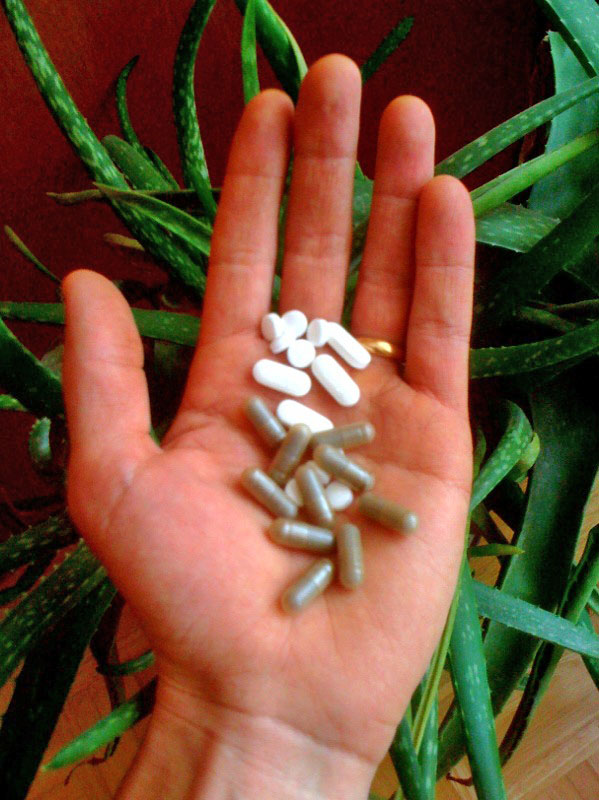
With the World Anti-Doping Agency (WADA) prohibiting the use of many stimulants and other drugs, some athletes turn to herbal or “natural” supplements to increase their energy, stimulate weight loss, or ensure that they are receiving necessary minerals and nutrients.
This can have catastrophic consequences for an athletic career. Because such supplements are largely unregulated, what’s in the box may not match the listed ingredients.
This mismatch led to the disqualification of German biathlete Evi Sachenbacher-Stehle from the 2014 Olympics after she tested positive for a banned stimulant that turned out to be in her herbal tea.
There have been roughly 1,000 positive tests for that stimulant, methylhexaneamine, most of them accidental by athletes who were using herbal supplements which they had assumed would be safe.
A new study published in the New England Journal of Medicine shows another reason to avoid herbal and “natural” supplements.
The paper, authored by Dr. Andrew Geller and colleagues at the Centers for Disease Control and Prevention, finds that over 20,000 emergency room visits per year in the United States can be attributed to such supplements.
The authors frame the topic with some stats on herbal supplements: there are over 55,000 of them on the market, as of 2012. About a third of Americans use “complementary health approaches”, with one in five taking supplements other than vitamins. And the market is work billions of dollars.
One might assume that the large and profitable market means that manufacturers don’t have much incentive to improve labeling or safety in the near future: if it’s not broke, don’t fix it?
It has been hard to track health problems caused by supplements because only the most serious, for instance hospitalization and death, are required to be reported.
To close the data gap, Geller and his colleagues looked at 10 years of data from each of 63 hospitals around the country. They looked for emergency room visits caused by supplements, excluding drinks like energy drinks or the tea supplements that tripped up Sachenbacher-Stehle. So their data may actually underestimate the complications caused by products from the herbal supplement industry.
With only non-food and non-drink supplements counted, the authors estimated that between 18,000 and 27,000 emergency room visits per year were caused by the products. About 2,000 of those visits each year led to hospitalization.
Alarmingly, almost a quarter of the emergency room trips were caused by allergic reactions to the supplements.
Another 10% were caused by the patient taking a larger dose than suggested. Many people seemed to think that because a supplement was “herbal” or “natural”, there was no such thing as too much – but many substances and chemical compounds can become toxic at a certain level. After all, most synthetic drug compounds either replicate or imitate compounds found in nature.
The study also found that herbal supplement use can damage other people in a patient’s family, with just over 20% of the emergency room visits due to “unsupervised ingestion” of a supplement by children in the house.
But back to athletes. The majority of the cases came from supplements claiming to promote weight loss, increase energy, or provide micronutrients like calcium, iron, and potassium.
Those are exactly the sort of products which may appeal to athletes hoping to become more lean or have more zip in their training, but who avoid regulated drugs because they include banned supplements.
For instance, a 2011 study found that between 70 and 80% of elite Finnish athletes used nutritional and dietary supplements, but less than a third had ever consulted a dietary specialist about why or how to do so.
Those types of supplements may be even more dangerous than the stimulants athletes are trying to avoid.
“Weight-loss or energy products caused more than half these visits, commonly for cardiac symptoms (palpitations, chest pain, or tachycardia),” the authors of the new study wrote. “Notably, cardiac symptoms were documented more frequently in emergency department visits for adverse events associated with weight loss (43%) and energy products (46%) than for prescription stimulants.”
The message? There’s even more reason to limit the number of substances and supplements which athletes rely on. Talk to a doctor and rely on safe, regulated products which are not on WADA’s banned list, or focus on a balanced diet and a healthy lifestyle to keep the pep in step.
Chelsea Little
Chelsea Little is FasterSkier's Editor-At-Large. A former racer at Ford Sayre, Dartmouth College and the Craftsbury Green Racing Project, she is a PhD candidate in aquatic ecology in the @Altermatt_lab at Eawag, the Swiss Federal Institute of Aquatic Science and Technology in Zurich, Switzerland. You can follow her on twitter @ChelskiLittle.



